Cyrtodactylus majulah Grismer, Wood & Lim, 2012
Singapore Bent-toed Gecko
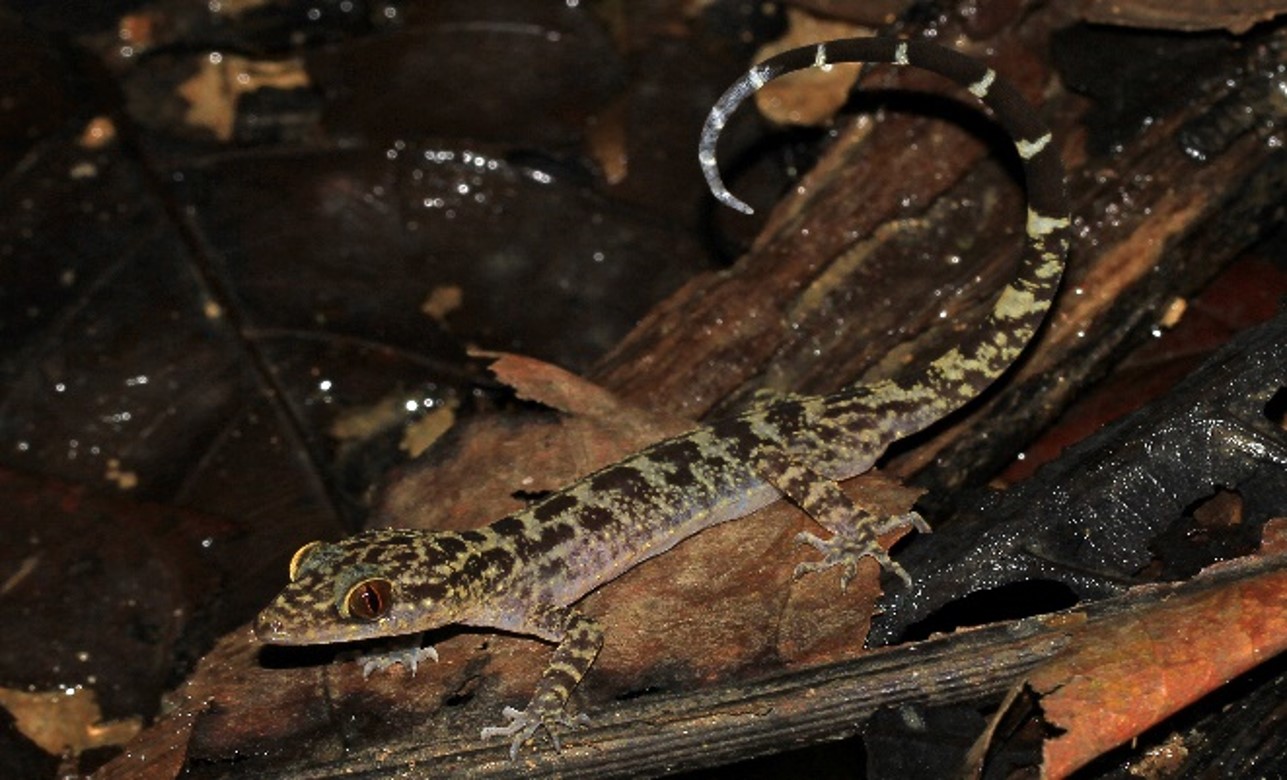
Overview
Singaporeans should be familiar with cicaks*. Many species of geckos can be found in human houses. It can be annoying to clean up the feces that they leave everywhere. Besides that, they do us no harm. However, there are several groups of geckos that do not range into such urban habitats. These lizards can only be found in specific forest types and habitats and are not so commonly encountered by the average Singaporean. One such forest gecko is the Singapore Bent-toed Gecko (Cyrtodactylus majulah). Geckos in this genus have slender, bent toes, which is what gives them their name. This page serves as a resource for interested members of public, educators and even hardcore reptile taxonomy enthusiasts. So, take some time to learn about one of the amazing animals that can be found in Singapore!

*Cicak - the Malay word for Gecko
Name
Scientific Name: Cyrtodactylus majulah, Grismer, Wood & Lim, 2012
Common Names: Singapore Bent-toed Gecko, Cicak Hutan Singapura
Etymology
The generic name, Cyrtodactylus, is derived from the Greek words κυρτός (kyrtos, which means bent, or crooked) and δάκτυλος (dáktylos, which means finger), literally coming to mean "bent finger". The specific epithet, majulah, in Bahasa Melayu, means to go forward or to progress. This is both an allusion to the fact that this species was described from Singapore and that Cyrtodactylus taxonomy is rapidly advancing, as many new species are being discovered and described every year [1]. The word Majulah is prominently featured in Singapore's National Anthem.
Majulah Singapura
Mari kita rakyat Singapura
Sama-sama menuju bahagia
Cita-cita kita yang mulia
Berjaya Singapura
Marilah kita bersatu
Dengan semangat yang baru
Semua kita berseru
Majulah Singapura
Majulah Singapura
Native Distribution
Distribution of the Cyrtodactylus genus
This genus ranges throughout South, east and Southeast Asia, and even some parts of Northern Australia [2].
Cyrtodactylus is the largest genus of geckos, containing at least 233 species (as of October 2017) [3], with many more species still undescribed. Due to their massive trans-regional range across several mainland, peninsular and archipelagic regions, the genus has seen massive diversification [2]. These species also can exhibit an extremely high level of microendemism (where a species is restricted to a very small range) [4]. Despite the unprecedented rate of biodiversity discovery, many areas within the genus' home range have yet to be properly studied [4].
Distribution of C. majulah
Cyrtodactylus majulah has thus far only been recorded on two islands; on Singapore Island and on Pulau Bintan of the Riau Archipelago [1]. Interestingly, it has not been recorded in Southern Peninsular Malaysia or on any other isands in the Riau Archipelago.
Within Singapore, it was thought to only exist within the Central Catchment Nature Reserve. However, there have been recent records of C. majulah in degraded secondary forest growth at Admiralty Park. This is thought to be a remnant population that is likely not connected to the populations in the CCNR [5].
Habitat
Over the years, the freshwater swamp forest ecosystem in Singapore has diminished drastically. Today, what is left of it is protected by various agencies, including the National Parks Board. It is a unique habitat that is characterised by the occurrence of slow streams that have a lower pH than in other such forests. This is caused by the accumulation and decay of plant matter in these streams, which releases tannic acid. This, in turn, causes the water to be acidic and tea-coloured. The streams and swamps are highly prone to flooding, which results in the forest soil being muddy and unstable. Furthermore, the waterlogged soil tends to be anaerobic as well. These factors provide a challenging but unique niche that many species of flora and fauna have exploited.[6][7]Cyrtodactylus majulah was described from specimens collected at Nee Soon Swamp Forest. This is the largest patch of freshwater swamp forest in Singapore [7]. It spans just 5 km2 but contains a disproportionately large amount of Singapore's biodiversity within it. It is connected to the Central Catchment Nature Reserve, which is the largest gazetted Nature Reserve in Singapore. Nee Soon is home to 23% of the reptiles, 59% of the amphibians, about 41% of the freshwater fish that are extant to Singapore [8]. Furthermore, countless species of insects and invertebrates may be found residing within this habitat. It is, therefore, an area of immense conservation importance.
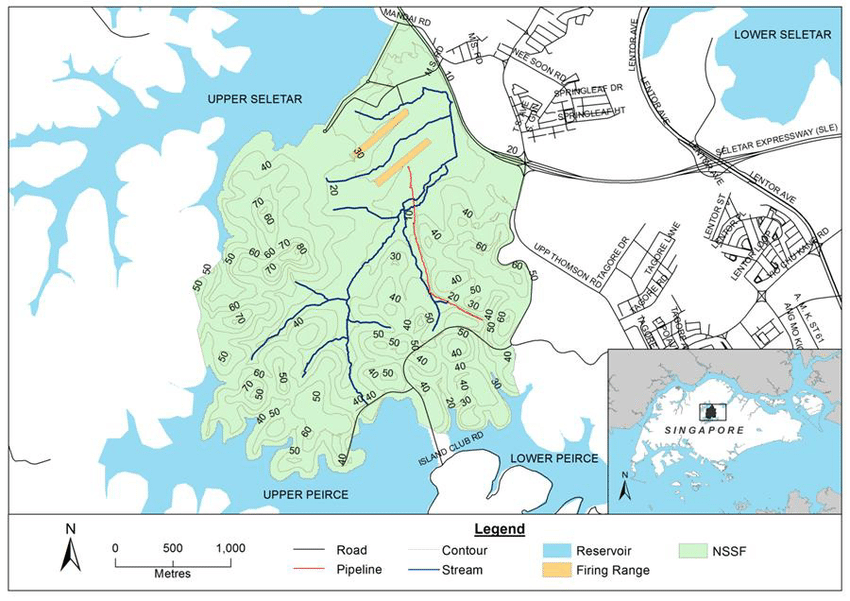
Nee Soon Swamp Forest is currently a protected area that is inaccessible to the general public. It is protected by the National Parks Board and the Ministry of Defence, which conducts live-firing activities at the firing range. It is bordered by the Seletar Expressway (SLE) and a golfing range [9]. Despite its small size and proximity to urban areas, Nee Soon Swamp Forest continues to be a stronghold for many animals and plants that cannot be found elsewhere on the island, or even the world.
Biology
Behaviour
Natural history observations of this species are few, due to its restricted range and cryptic nature. However, an interesting observation of C. majulah swimming to escape from immediate threat has been recorded [10]. Similar behaviour is also recorded in the closely related C. pantiensis (which also occupies swamp forest habitat), where it has been recorded to "jump into the water and run across its surface to escape capture." [10]
Feeding Habits
Little is known of the diet preferences of C. majulah. However, like its congeners, it likely feeds mostly on insects and other forest invertebrates. [11]
Regenerative Ability
Like other species of geckos, C. majulah is able to drop its tail when faced with danger. This is known as autotomy. The tail may subsequently regenerate, but will not have the colouration and patterning of the original tail.Conservation Status
Since C. majulah is a relatively recent discovery, it has not been evaluated under the Singapore Red Data Book, which was last published in 2008. However, it is considered a rare species with restricted habitat by Baker & Lim (2012, as Cyrtodactylus quadrivirgatus) [12]Diagnosis
Cyrtodactylus majulah has a unique combination of morphological characteristics that help to distinguish it from other members of its genus [1].
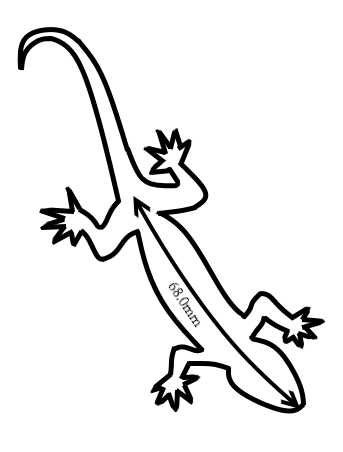
It has a maximum Snout-Vent Length (SVL) of 68.0mmIllustration drawn by A. Sankar.
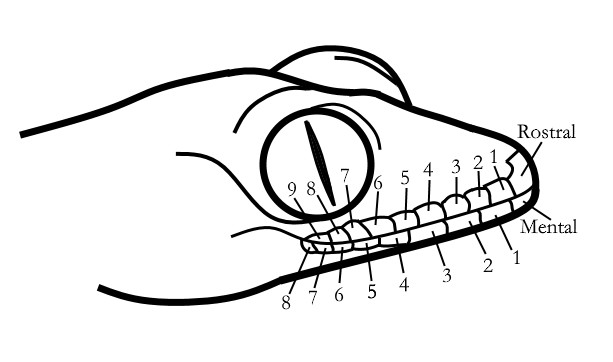
C. majulah can be distinguished by the strong tuberculation exhibited on its body and limbs. It possesses 39-46 paravertebral tubercules, 43-53 ventral scales, 20-23 subdigital lamellae and 7-11 precloacal pores. It has enlarged precloacal scales and tubercules on the basal portion of the tail [1].
Anatomical Glossary
Many of these terms may seem rather technical and may not make sense if you do not understand their usage. Hopefully, this glossary can help to clarify the usage of these terms in the context of this section.
Tubercules - A small knob or bump, which projects from the skin of the gecko
Paravertebral - Occurring parallel, or adjacent to the vertebra
Ventral Scales - The scales on the underside of gecko
Subdigital lamellae - Expanded scales under the toe pads
Precloacal pores - Pores that are found above the cloaca on the thighs of the gecko, which are used to excrete hormones
Colouration
C. majulah (like many other Cyrtodactylus species) exhibits some variation in colouration and patterning. Nevertheless, there are various distinguishing features that can be used for reliable field identification. These hallmark features have been summarised in the picture below.
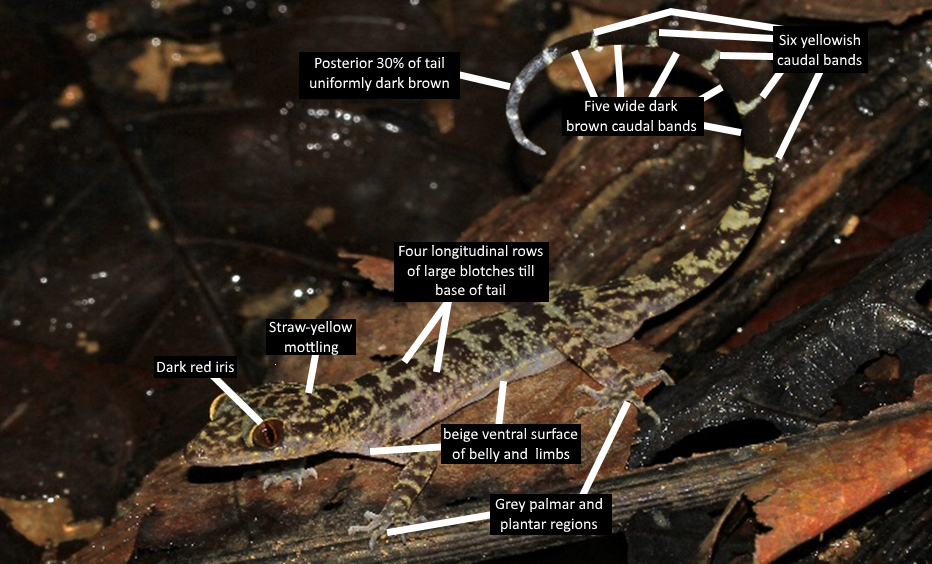
Besides the highlighted features, it is also noted that each ventral scale bears one or two tiny black spots. Furthermore, the region underneath the tail is dark brown and displays irregularly shaped beige blotches. [1]
Other Cyrtodactylus species in Singapore
Besides C. majulah, several other species of Cyrtodactylus have been recorded in Singapore. They may be distinguished based on their characteristics, and the areas in which they are found.
| Species Name and Other Resources |
Photo |
Identifying features |
| Cyrtodactylus consobrinus (Peter's Bent-toed Gecko) 1. EcologyAsia 2. The Biodiversity of Singapore Database 3. NParks Flora & Fauna Web |
Easily distinguishable from the other Cyrtodactylus species in Singapore. Possesses a distinctive black and white/cream banding throughout its body and tail. [13] A reticulated pattern can also be observed on C. consobrinus' head and rostrum. [13] In Singapore, is found in primary forest, usually restricted to crevices in trees and large rocks formations. [14] |
|
| Cyrtodactylus pantiensis (Panti Bent-toed Gecko) 1. EcologyAsia |
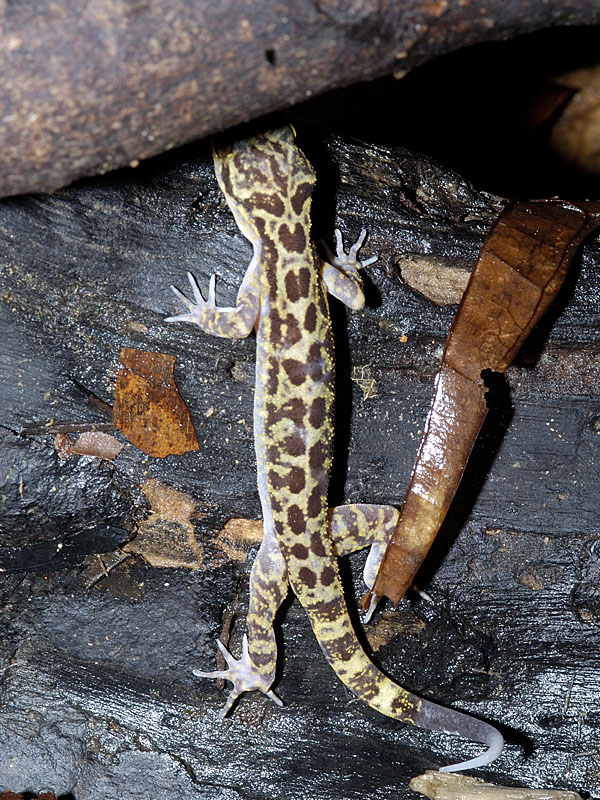 |
A pair of mirrored, half-moon shaped, blotches can be seen at the base of the lizard's skull. [15] The dark brown blotches form four broken longitudinal lines that extend till the base of the tail Creamy-yellow speckles can be seen in between all the blotches and in the banding on the tail. Thus far, in Singapore, this species has only been recorded on Pulau Tekong [16]. Like C. majulah, this species also appears to be a swamp-forest specialist [1]. |
| Cyrtodactylus quadrivirgatus (Marbled Bent-toed Gecko) 1. EcologyAsia |
This species is highly variable in patterning and colouration throughout its range. It may be difficult to identify from a few pictures. Generally, the species is distinguished by the semi-continuous longitudinal lines that extend from behind the eyes and nape till the base of the tail. [17] Individuals of C. majulah were considered to belong to C. quadrivirgatus until the description of the former in 2012. [1] |
|
| Cyrtodactylus semenanjungensis (Peninsular Bent-toed Gecko) 1. EcologyAsia_ 2. The Biodiversity of Singapore Database |
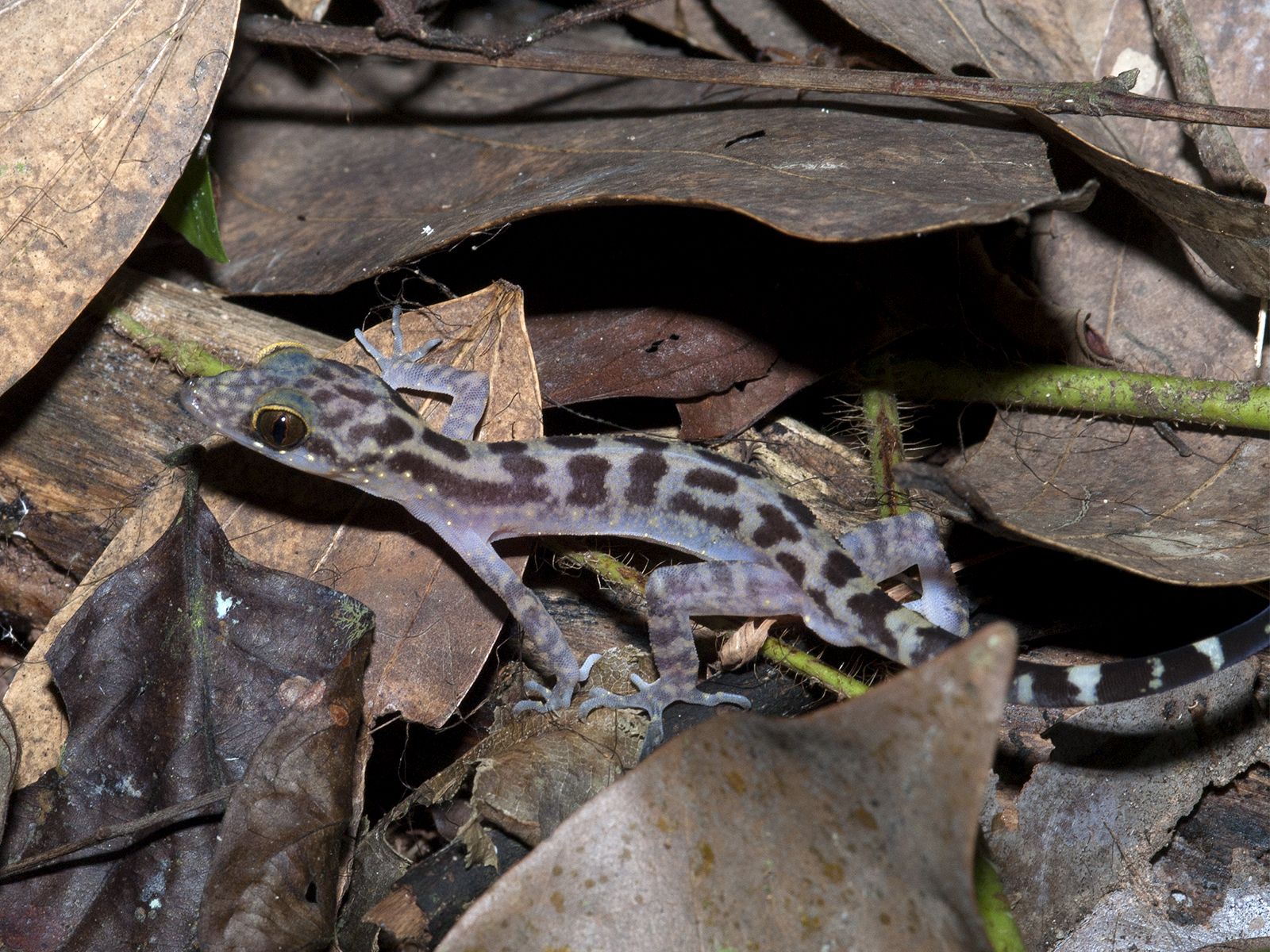 |
Possesses a dark stripe behind the eye that ends just after the forelimbs. The two eyestripes on either side are connected over the back by a dark, broken bar. Five to six such broken bars extend across the back until the base of the tail [18]. Similar to C. majulah, individuals of this species were classified under C. quadrivirgatus until formally being described in 2005. [1] Like C. majulah and C. pantiensis, this species is also found around swamp forest habitat [19] |
Type Information
Holotype
The holotype is the single specimen upon which the description for the entire species is based. The specimen serves as the name-bearer for the species and is usually safely kept in a museum.Adult male, 67.9 mm SVL (ZRC 2.6950)
Singapore: Central Catchment Nature Reserve, Nee Soon Swamp-forest (1°22'48.99''N, 103°49'05.39''E;51m)
Collected by: L. Grismer, E. Quah, K.O. Chan, A. Figueroa & A. Devan-Song, 22 Jun 2011.
Stored in: Lee Kong Chian Natural History Museum
Paratypes
Paratypes are other members of the type series. They are a group of individuals that demonstrate variation within the species. Paratypes are not name-bearing specimens.
Adult male: 68.0 mm SVL (ZRC 2.6951)
Adult male: 62.7 mm SVL (ZRC 2.6952)
Adult male: 67.2 mm SVL (LSUHC 10458)
Adult male: 67.2 mm SVL (ZRC 2.6953)
Collection data as per holotype
Synonyms
Synonyms in the taxonomic sense are not the same as synonyms in the literary sense. Over time, a species may be referred to by a variety of scientific names by various authorities. As per the International Code of Zoological Nomenclature, the oldest available name will take precedence over all other synonyms unless it is invalidated by a reclassification or redescription.
Due to the intricate morphological details that distinguish the various species of Cyrtodactylus, there is confusion in many of the records with regards to what species is being recorded. C. majulah has been known by a variety of names over the years. It was initially recorded as Gymnodactylus marmoratus in the Singapore Botanic Gardens in 1925 by Sworder [20].
Subsequently, until it was properly described as a distinct species, C. majulah was grouped under C. quadrivirgatus [21].

After C. majulah was properly described, it was thought that all C. quadrivirgatus sightings prior were conspecific with C. majulah. (i.e. All the C. quadrivirgatus records in Singapore prior to the description were actually C. majulah) [1]. However, to add to the confusion, in 2017, an individual of C. quadrivirgatus was recorded in Upper Seletar, showing that the two species may actually be sympatric* in Singapore [22].
*Sympatric - When two species exist in the same geographic area.
List of Synonyms [3]
Gymnodactylus marmoratus – SWORDER 1925: 63 (not of KUHL)
Gymnodactylus marmoratus – SMITH 1930: 12
Cyrtodactylus quadrivirgatus – DRING 1979: 228 (in part)
Cyrtodactylus quadrivirgatus – DENZER & MANTHEY 1991: 314
Cyrtodactylus quadrivirgatus – LIM & LIM 1992: 121 (not of TAYLOR)
Cyrtodactylus quadrivirgatus – MANTHEY & GROSSMANN 1997: 227
Cyrtodactylus quadrivirgatus – CHAN-ARD et al., 1999: 24
Cyrtodactylus quadrivirgatus – BAKER & LIM 2008: 80
Cyrtodactylus majulah GRISMER, WOOD & LIM 2012
Phylogeny
Taxonavigation [23]
| Taxonomic Hierachy |
|
| Kingdom |
Animalia |
| Phylum |
Chordata |
| Subphylum |
Vertebrata |
| Superclass |
Tetrapoda |
| Superorder |
Lepidosauria |
| Order |
Squamata |
| Infraorder |
Gekkota |
| Family |
Gekkonidae |
| Subfamily |
Gekkoninae |
| Genus |
Cyrtodactylus |
| Species |
majulah |
Sister Group to Hemidactylus
Pyron et al. (2013) conducted the largest phylogenetic estimate (4161 species) for the Order Squamata (which comprises all lizards and snakes). A total of 12 genes were sequenced, including seven nuclear genes and five mitochondrial genes. This study helped to identify relationships between many clades of Squamates, including Gekkotans. [24]
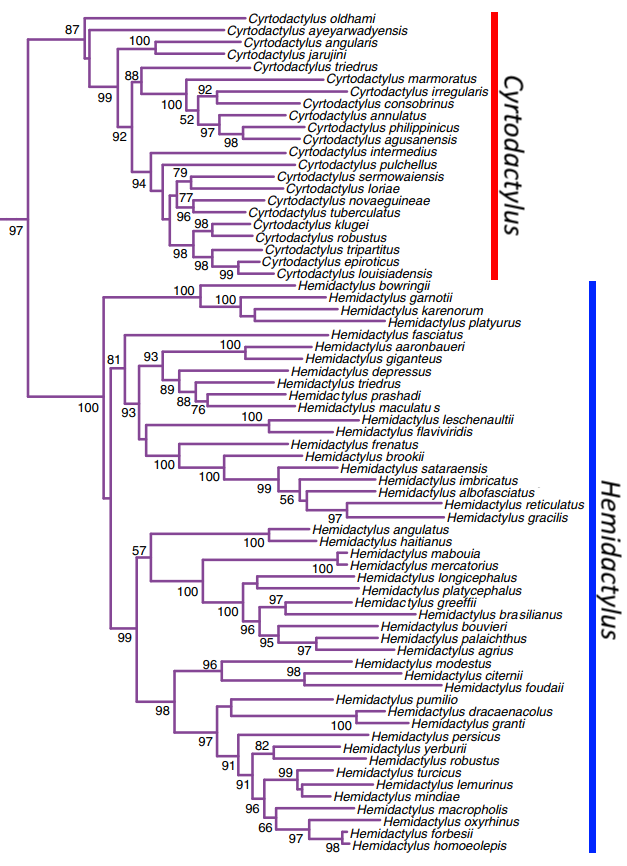
The phylogenetic tree produces shows that the placement of the two genera Cyrtodactylus and Hemidactylus next to each other on the tree has a high ML Bootstrap value (97). This indicates that their placement as sister genera has high support in the phylogenetic analysis.
Swamp Forest Specialists
Grismer et al. (2012), while describing C. majulah, sequenced a 1505bp fragment of the ND2 mitochondrial gene from various Cyrtodactylus, species, including C. quadrivirgatus, which was previously thought to be conspecific with C. majulah. [1]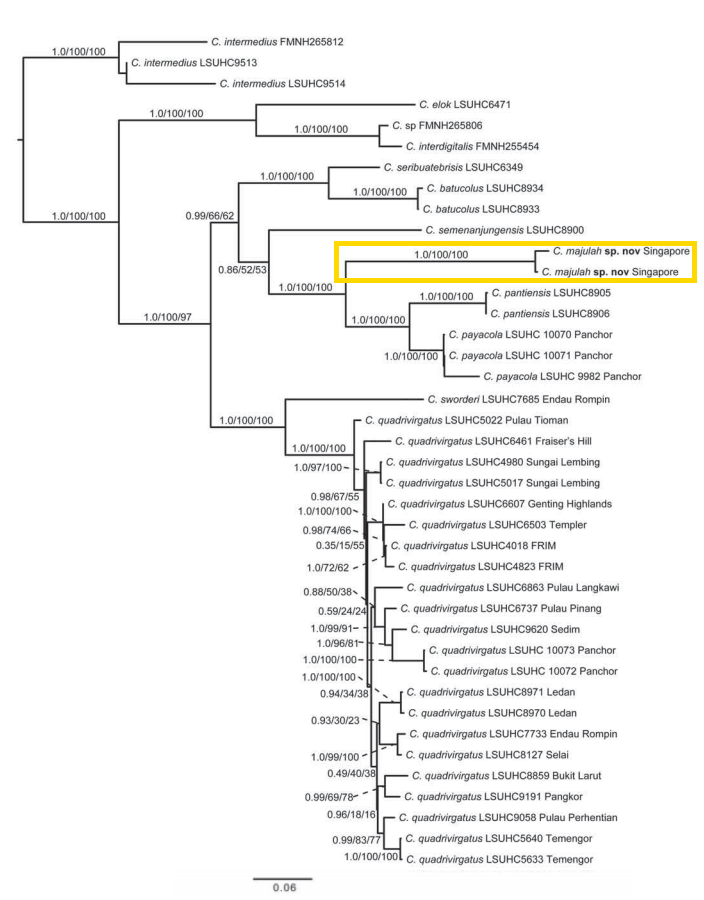
Maximum Likelihood diagram with Bayesian Posterior Probability (BPP), Maximum Likelihood (ML) and Maximum Parsimony (MP) values being expressed at each node as (BPP/ML/MP).Adapted from Grismer et al. (2012) (Used in accordance with Fair Use). Annotations by A. Sankar.
The tree clusters the C. quadrivirgatus populations together, but does not group C. majulah in the same cluster, indicating that they are not conspecific, as was initially thought. Instead, the study grouped C. majulah as a basal group to C. pantiensis and C. payacola. This relationship is well supported by the phylogenetic analysis, with high BPP, and ML/MP bootstrap values (1.0/100/100) for all the nodes, indicating that they are very stable. C. semenanjungensis is clustered as basal to these three species. However, BPP and ML/MP bootstrap values (0.86/52/53) indicate that this relationship has somewhat inconsistent support. The ND2 gene is useful in reliably analysing phylogenetic relationships in the Cyrtodactylus genus [25].
Altogether, C. majulah, C. pantiensis, C. payacola, and C. semenanjungensis represent a clade of swamp-forest dwelling Sundaland species. It is likely that they had common ancestors that also specialised in freshwater swamp forest habitat and subsequently speciated allopatrically. Future biodiversity surveys can potentially target swamp forests in nearby islands to uncover heretofore unknown members of this clade.
Literature and References
[1] - Grismer LL, Wood PL & Lim KKP (2012) Cyrtodactylus majulah, a new species of bent-toed gecko (Reptilia: Squamata: Gekkonidae) from Singapore and the Riau Archipelago. The Raffles Bulletin of Zoology 60(2): 487-499
[2] - Wood PL, Heinicke MP, Jackman TR & Bauer AM (2012) Phylogeny of bent-toed geckos (Cyrtodactylus) reveals a west to east pattern of diversification. Molecular Phylogenetics and Evolution, 65(3): 992-1003
[3] - Uetz, P. (editor), The Reptile Database, http://www.reptile-database.org, accessed November 15, 2017.
[4] - Grismer LL, Wood, PL, Thura M, Zin T, Quah E, Murdoch M, Grismer MS, Aung L, Htet K & Lwin N (2017) Twelve new species of Cyrtodactylus Gray (Squamata: Gekkonidae) from isolated limestone habitats in east-central and southern Myanmar demonstrate high localized diversity and unprecedented microendemism. Zoological Journal of the Linnean Society, zlx057
[5] - Law IS (2017). Singapore bent-toed gecko at Admiralty Park. Singapore Biodiversity Records 2017: 77
[6] - Turner IM, Boo CM, Wong YK, Chew PT & Ali BI (1996) Freshwater swamp forest in Singapore, with particular reference to that found around the Nee Soon Firing Ranges. Gardens' Bulletin, Singapore, 48 (1&2): 129-157
[7] - Lee Kong Chian Natural History Museum (2017) Nee Soon Swamp Forest, The Digital Nature Archive of Singapore, https://lkcnhm.nus.edu.sg/dna/places/details/13, accessed November 15, 2017
[8] - Li TJ, Chee KC, Lim WH & Cai YX (2016) The fish fauna of Nee Soon Swamp Forest, Singapore. Raffles Bulletin of Zoology, Supplement No. 32: 56-84
[9] - Sun YB, Dadiyorto W, Kim DE & Liong SY (2016) Development and Application of an Integrated Hydrological Model for Singapore Freshwater Swamp Forest. Procedia Engineering, 154: 1002-1009
[10] - Groenewoud D (2015) Singapore bent-toed gecko swimming underwater. Singapore Biodiversity Records 2015: 42
[11] - National Parks Board (2017) Cyrtodactylus majulah. Flora and Fauna Web, https://florafaunaweb.nparks.gov.sg/Special-Pages/animal-detail.aspx?id=6479, accessed November 15, 2017
[12] - Baker N & Lim KKP (2012) Wild Animals of Singapore. Singapore: Draco Publishing and Distribution Pte Ltd. 180pp
[13] - Baker N (2017) Peter's Forest Gecko. Ecology Asia, http://www.ecologyasia.com/verts/lizards/peters-forest_gecko.htm, accessed November 15, 2017
[14] - National Parks Board (2017) Cyrtodactylus consobrinus. Flora and Fauna Web, https://florafaunaweb.nparks.gov.sg/Special-Pages/animal-detail.aspx?id=253, accessed November 15, 2017
[15] - Baker N (2017) Panti Bent-toed Gecko. Ecology Asia, http://www.ecologyasia.com/verts/lizards/panti-bent-toed-gecko.htm, accessed November 15, 2017
[16] - Lim KKP, Chua MAH & Lim NTL (2016). Freshwater fishes, terrestrial herpetofauna and mammals of Pulau Tekong, Singapore. Nature in Singapore, 9: 165-198
[17] - Baker N (2017) Marbled Bent-toed Gecko. Ecology Asia, http://www.ecologyasia.com/verts/lizards/marbled-bent-toed-gecko.htm, accessed November 15, 2017
[18] - Baker N (2017) Peninsular Forest Gecko. Ecology Asia, http://www.ecologyasia.com/verts/lizards/peninsular-bent-toed-gecko.htm, accessed November 15, 2017
[19] - Grismer LL, Leong TM (2005) New Species of Cyrtodactylus (Squamata: Gekkonidae) from Southern Peninsular Malaysia. Journal of Herpetology, 39(4): 584-591
[20] - Sworder GH (1925) The lizards of Singapore Island. Singapore Nature, 5: 61–68.
[21] - Dring JCM (1979) Amphibians and reptiles from Northern Trenganggu, Malaysia, with descriptions of two new geckos: Cnemaspis and Cyrtodactylus. Bulletin of the British Museum (Natural History), 34(5): 228
[22] - Law IS, Law IT & Serin S (2016) Marbled bent-toed gecko at Upper Seletar. Singapore Biodiversity Records 2016: 117-118
[23] - Encyclopedia of Life. http://www.eol.org. Accessed 3 December, 2017
[24] - Pyron R, Burbrink FT & Wiens JJ (2013) A phylogeny and revised classification of Squamata, including 4161 species of lizards and snakes. BMC Evolutionary Biology, 13(1), 93
[25] - Brennan IG, Bauer AM, Ngo VT, Wang Y, Wang W, Zhang Y & Murphy RW (2017) Barcoding utility in a mega-diverse, cross-continental genus: keeping pace with Cyrtodactylus geckos. Scientific Reports, 7: 5592